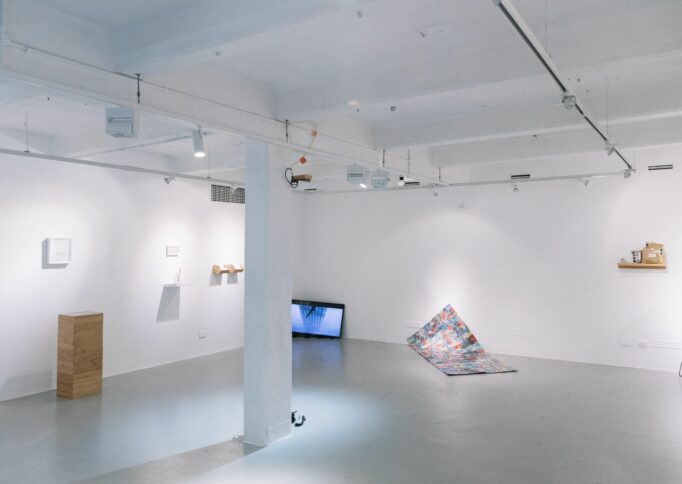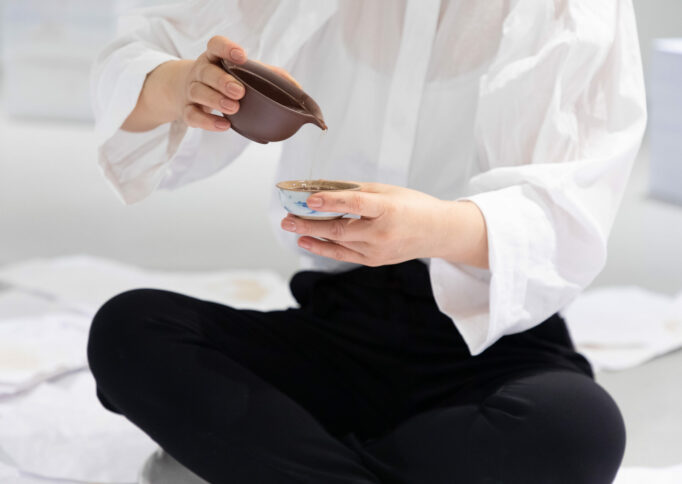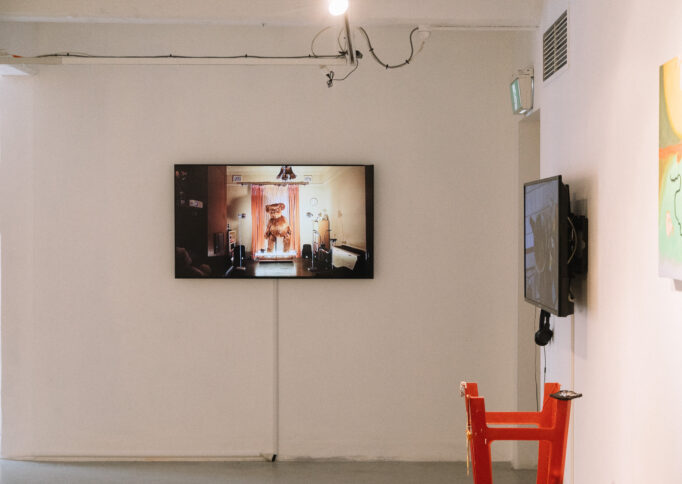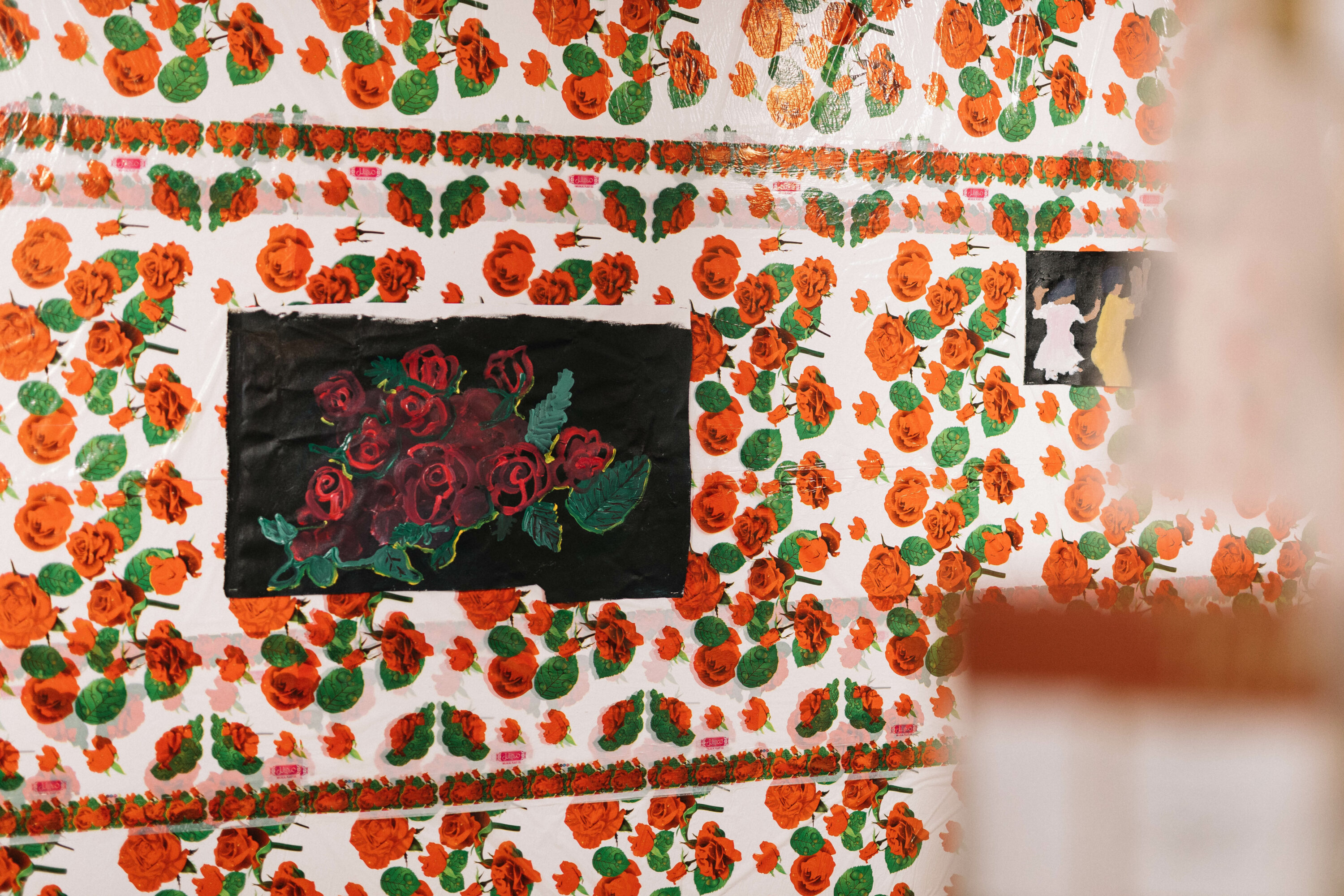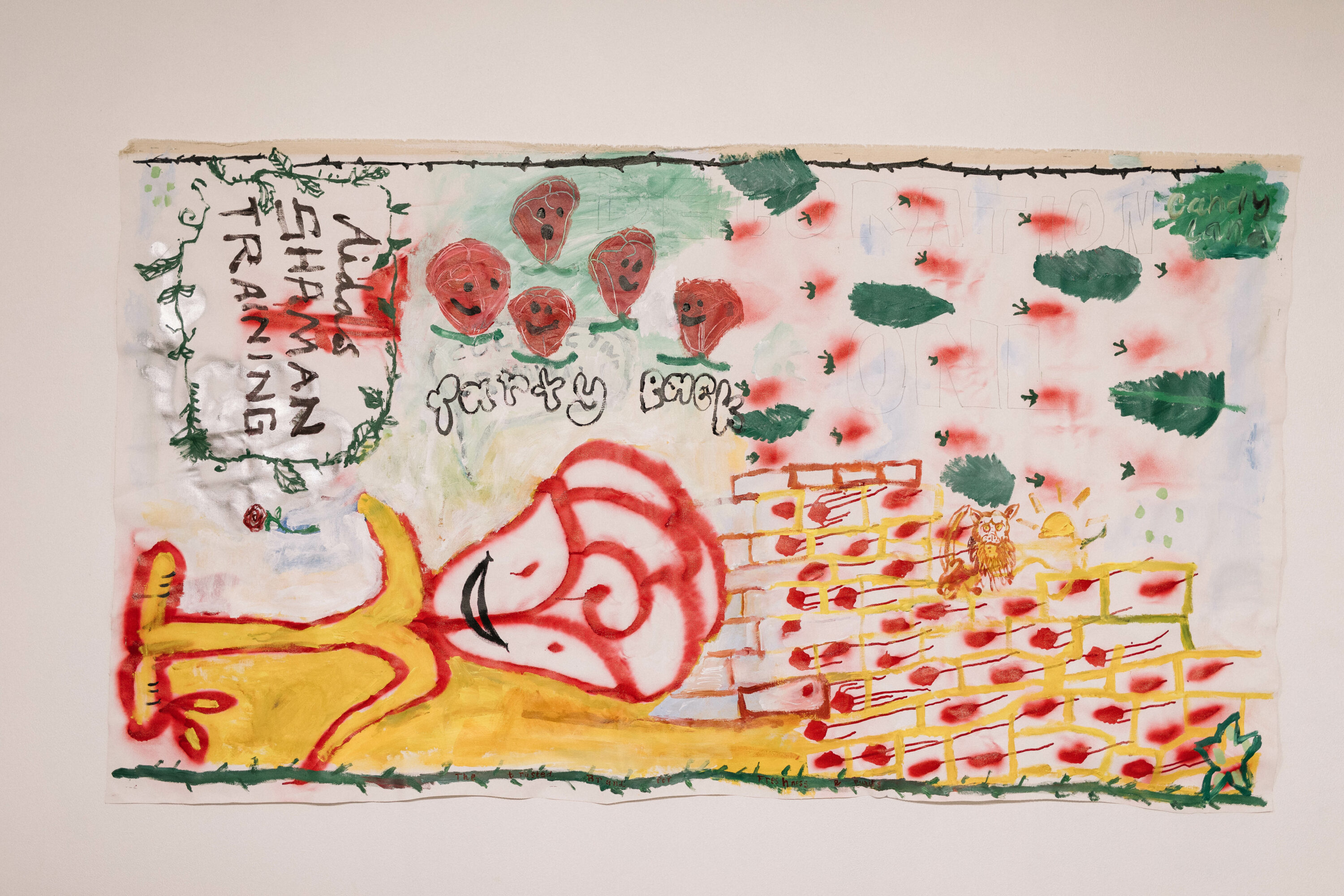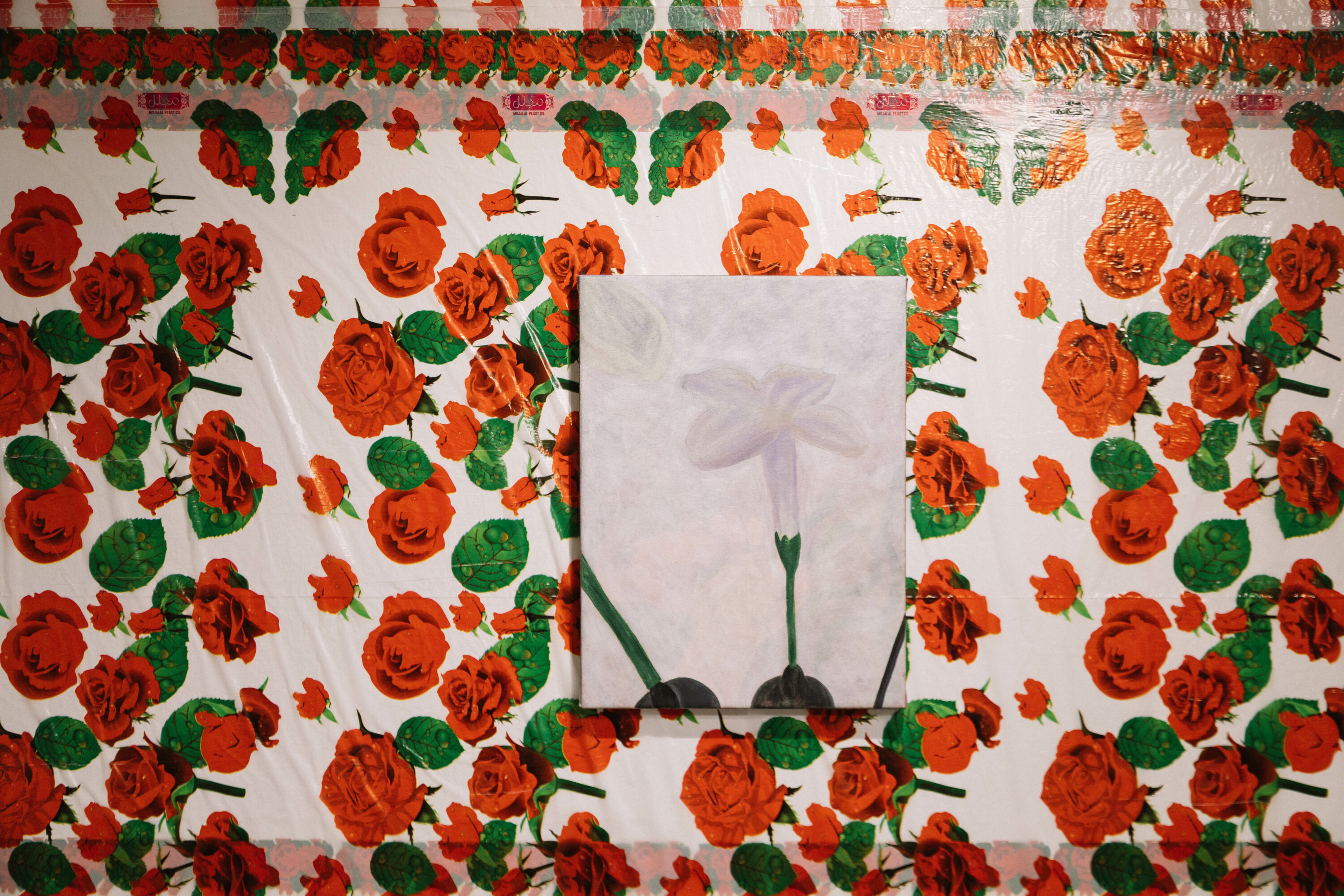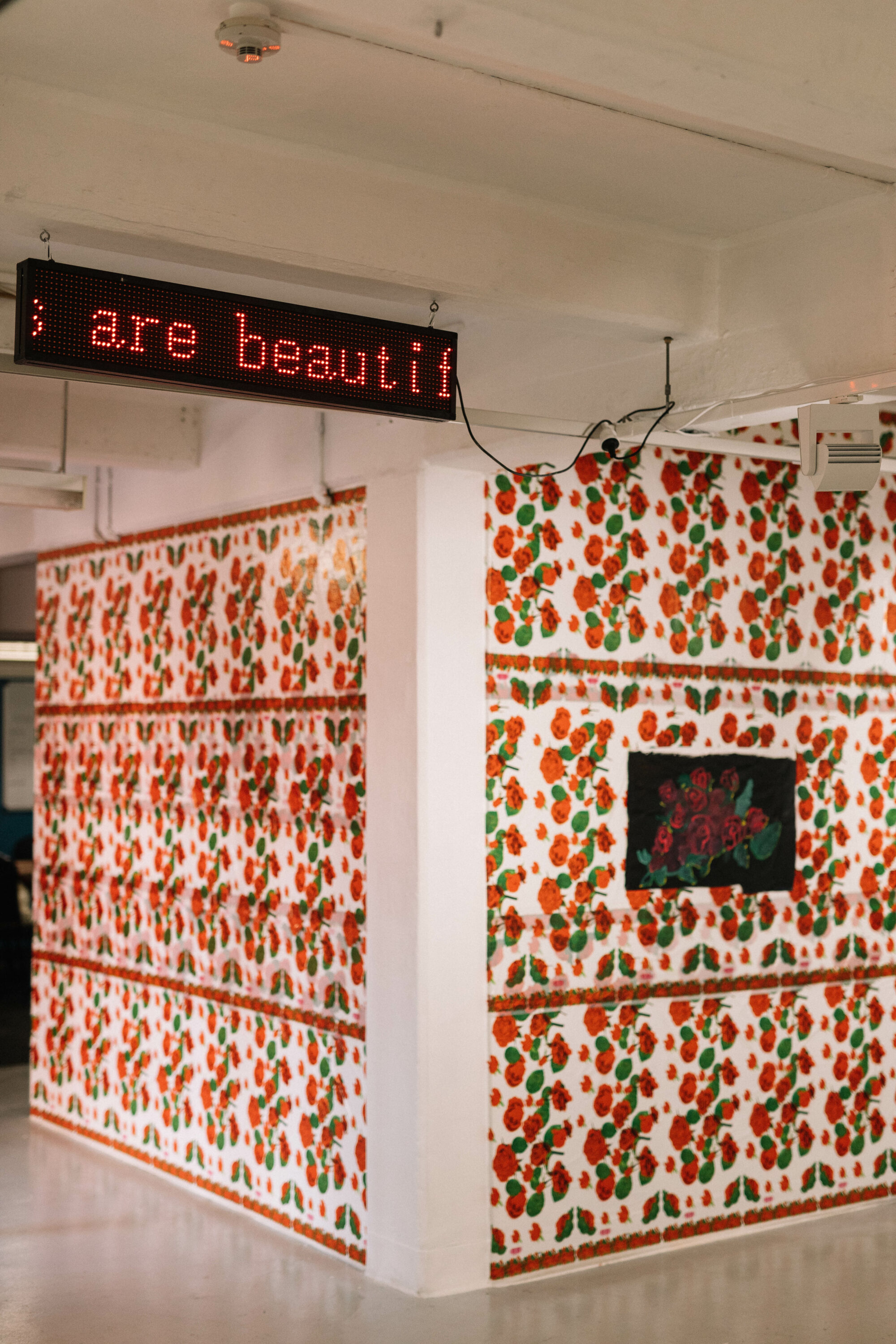Exhibition
Amateur Thief
Aida Azin and Tara Rowhani-Farid
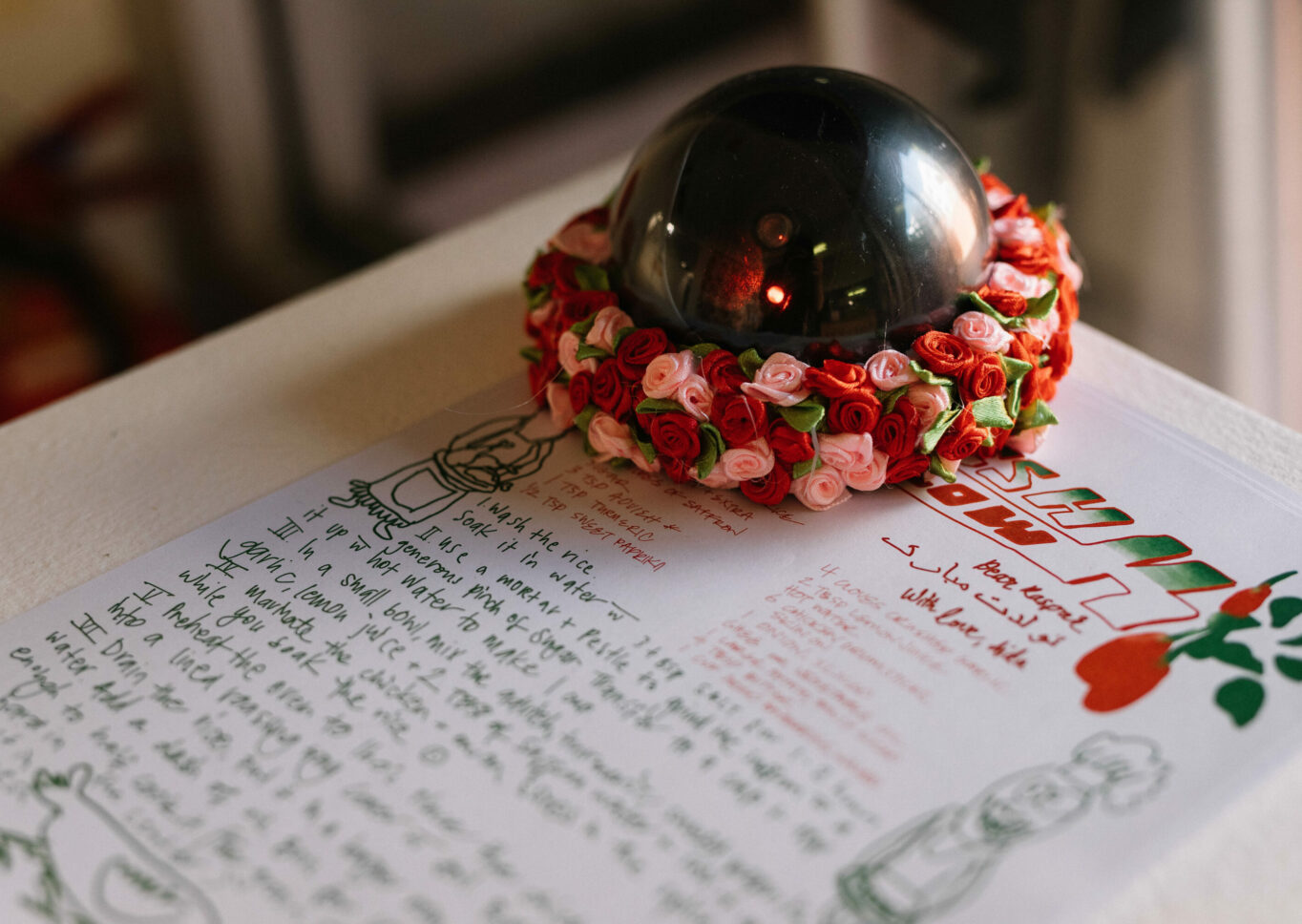
Photograph: Thomas McCammon
About the exhibition
Thieves typically fall into two groups: amateurs and professionals. The professionals work in teams – with systems in place that guarantee their success, while the amateur thief takes what they can get.
Amateur Thief sees artists Aida Azin and Tara Rowhani-Farid consider cultural practices disrupted, appropriated, stolen and recovered.
To consider the migrant experience of assimilation (how property, possession and place are translated across cultures) one must examine its consequences. When will we have the courage to unpack our stolen goods?
Amateur Thief
Audio Description
Amateur Thief
Aida Azin and Tara Rowhani-Farid
This is an audio description for Aida Azin and Tara Rowhani-Farid’s exhibition, Amateur Thief, presented by Nexus Arts Gallery on Kaurna Country, Adelaide, South Australia. The exhibition is available to experience in person from the 24th November – 16th December 2022.
Thieves typically fall into two groups: amateurs and professionals. The professionals work in teams – with systems in place that guarantee their success, while the amateur thief takes what they can get. Amateur Thief sees artists Aida Azin and Tara Rowhani-Farid consider cultural practices disrupted, appropriated, stolen and recovered. To consider the migrant experience of assimilation (how property, possession and place are translated across cultures) one must examine its consequences. When will we have the courage to unpack our stolen goods?
On entering the gallery, there is a white plinth to the right. Atop this are leaflets with a recipe for zereshk polow, barberry rice. The reprinted handwriting is in green and red. Keeping the recipe pages pinned down is a small half-globe security camera. It is black, around 10cm wide, with a tiny flashing red light, and is circled by small red and pink ribbon roses.
In the entrance hall opposite the door, the wall is covered with thin plastic tablecloth material, semi-translucent, decorated with roses. The material is sourced from a Persian supermarket.
Aida Azin, Spices for Sale (X4), 2022, $30 per packet
Hanging from the ceiling in the entrance are two chains with many plastic packets of spices attached. The spices are vacuum-sealed into the packets, which vary in size from around 10cm square to A4 size. Some packets contain multiple brightly coloured spices like saffron and turmeric, and trinkets, such as beads and ribbon roses. Most packets are stapled to a strip of cardboard at the top, and the strips feature low-quality printed images of brands like Foodland and Cheap as Chips. Some packets also have handwriting across the top.
The majority of the exhibition is in the Nexus Arts Gallery, a white four-walled space around 4m x 6m, with a white rectangular column in the centre.
The first wall to the left is also covered with the plastic tablecloth material. Pinned to this are two paintings on unmounted canvas.
Aida Azin, Flowers, 2022, 475 x 750mm, $300.
This painting is a rendering of a bouquet of roses against a black background. The red roses and green leaves are painted in long, curling brush strokes with yellow highlights.
Aida Azin, The Persian Snap, 2022, acrylic on canvas, 409 x 309mm, $200
This smaller painting also has a black background. Two simply painted figures with brown skin and black hair, one in a white and pink dress and one in yellow, dance together.
Aida Azin, Salam! Happy Market (door strips, door chime, surveillance camera), 2022, dimensions variable, NFS
The first section of the next wall is an alcove which leads to the door to the Nexus staff area; Azin has decorated this area by hanging long dark grey plastic door strips from the doorframe, as in a deli or market. Spray-painted in red across the strips are the outlines of two large roses.
Behind the strips is a sensor, bedecked with red and pink ribbon roses, which sings out whenever anyone walks through.
Aida Azin, Collective Criminality, 2022, acrylic and spray on canvas, 1040 x 2250mm, $1200
On the next, long, white wall is a large painting on unmounted canvas in landscape orientation. It is painted mainly in outlines in spraypaint, reminiscent of graffiti.
Along the bottom of the painting is a green line like a vine, with many small green offshoots.
In the bottom left corner is a long figure which looks partially like a rose. The feet in tied red shoes extend in a stem to leaves/arms, then a head of a rose which has a black smiley face.
The bottom right section has rows of yellow bricks, each dotted with a splash of red, dripping spraypaint. Atop the bricks is a more detailed owl-like creature, and a simple rising sun. In the very corner is a small green star.
The top right section has a pattern of green trees and faint red fruits, laying on their sides, against the white background.
To the left of this are five roughly sketched rose shapes with black smiley faces, and cartoon handwritten text reading ‘Party back.” In the top left corner, text turned on its right side reads Aida’s SHAMAN TRAINING, encircled by green leaves and vines.
Along the top of the painting is another long green vine to match the first.
Tara Rowhani-Farid, Palais de Tokyo, 2022, oil on canvas, 409 x 309 mm, NFS
The next wall is wallpapered with the plastic tablecloth material. In the centre is a small mounted canvas in portrait orientation. The painting features a tall white flower on an off-white background.
Tara Rowhani-Farid, Take it, it’s mine, 2022, oil on canvas, 1680 x 1223 mm, NFS
The next long wall is also plain white. In the centre is a large artwork which combines two large canvasses sitting flush against each other. The bottom canvas is covered with blue-shaded abstract leaf shapes against a black background. The top canvas has an olive-green background, with darker green leaves as side borders.
Overlaid on both canvasses, joining them, is a delicate stencil-like pattern in gold. Tiny flowers and their stems create a criss-cross pattern over most of the centre of the works; along the right and left sides from top to bottom is a more elaborate pattern, starting at the outside of the work with scalloped and dotted lines. The lines grow into eighteen hearts, nine on either side of the work. Each is filled with leafy stems, diamonds and floral shapes.
Tara Rowhani-Farid, untitled, 2022, oil on canvas with plastic flower, 375 x 309 mm, NFS
Returning to the first wall on the other side of the gallery entrance, this shortened white wall hosts a single small canvas in portrait orientation. White roses are painted in a realistic but flat style across an olive-green background. A single plastic pink rose sits atop the canvas.
On the ceiling above this is another half-globe black security camera surrounded by red and pink ribbon roses, with an occasionally blinking red light.
Aida Azin and Tara Rowhani-Farid, persian_princess, 2022, LED sign, 200 x 900mm, NFS
Hanging from the ceiling above the entrance is an LED sign, just under a metre wide, which features a continuously rolling stream of digital text. The text reads:
Aesthetics are dependent on very explicit sets of power relations.
The name Tara is actually just from Gone with the Wind
Art is alibi for cannibal power.
Ahn damaghi is a made up word.
Some particular images of colonised cultures are carefully and habitually maintained as sourcesof inspiration. What happened to those costumes? I want to dress in my national dress.
Tablecloth towel head.
If you do not practise your language it is like losing your leg. Where do you come from? White Australia exists in perpetual negation to the question.
You are so lucky to live here, on election day.
The criminal will. White Australia constantly works to conceal itself.
You look like something but I cannot quite put my finger on it.
I am always in relation to who I am. Who am I? Displayed things are beautiful. Shows power.
Normalises consumption. None of this stuff is actually mine.
Beauty and art used to justify a range of cannibal behaviours. “The rug” is probably not a fun nickname. Exoticism and appropriation. When do you migrate from the sofreh to the table? Glamorous and rich cannibals. I can understand because both of my parents are. Power (over other bodies) – Fascinating and erotic. Oh you know it is actually Iranian and not Persian now. Aristocratic vampires. I am glad that you recognise you have PTSD.
–
This has been an audio description by Meg Riley for the Nexus Arts Gallery show, Amateur Thief by Aida Azin and Tara Rowhani-Farid. More information on this and other events and exhibitions can be found on the Nexus Arts website, nexusarts.org.au.
Explore the exhibition
-
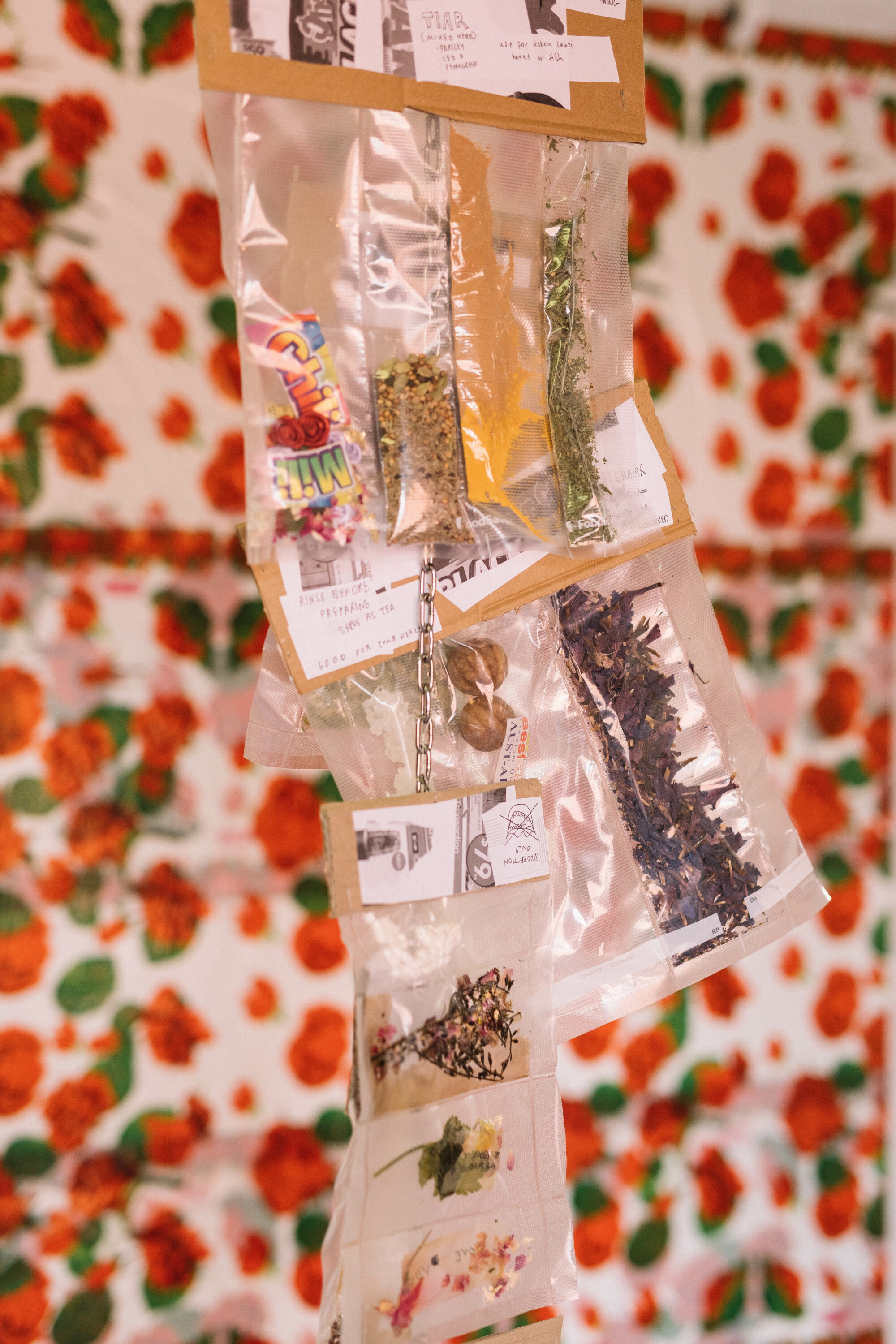
Photograph: Thomas McCammon
- Artwork Spices For Sale
- Artist Aida Azin
- Year 2022
- Size dimensions variable
Installation view
-
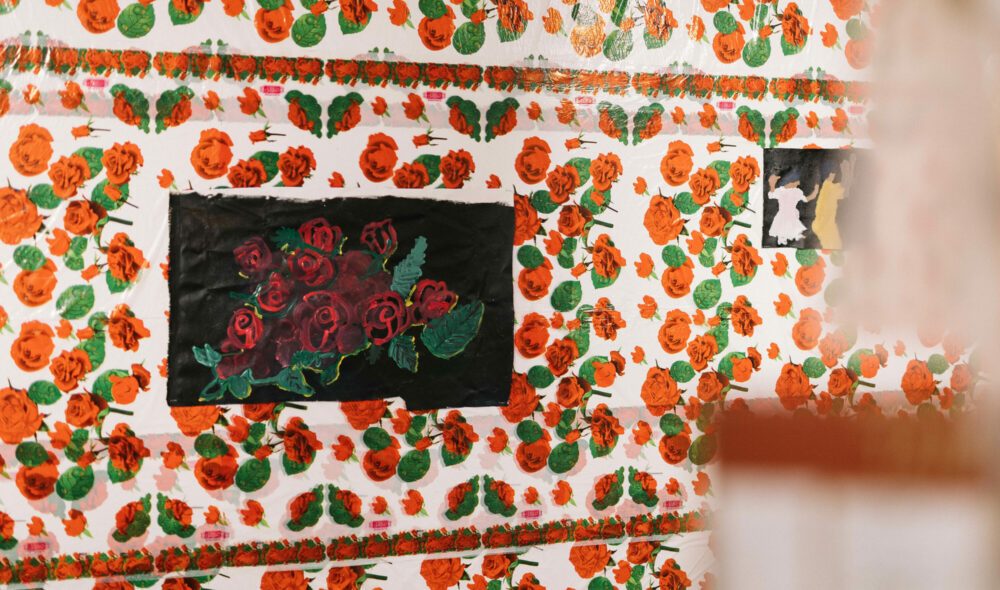
Photograph: Thomas McCammon
- Artwork Flowers
- Artist Aida Azin
- Year 2022
- Medium acrylic on canvas
- Size 475 x 750mm
- Price $300
Installation view
-
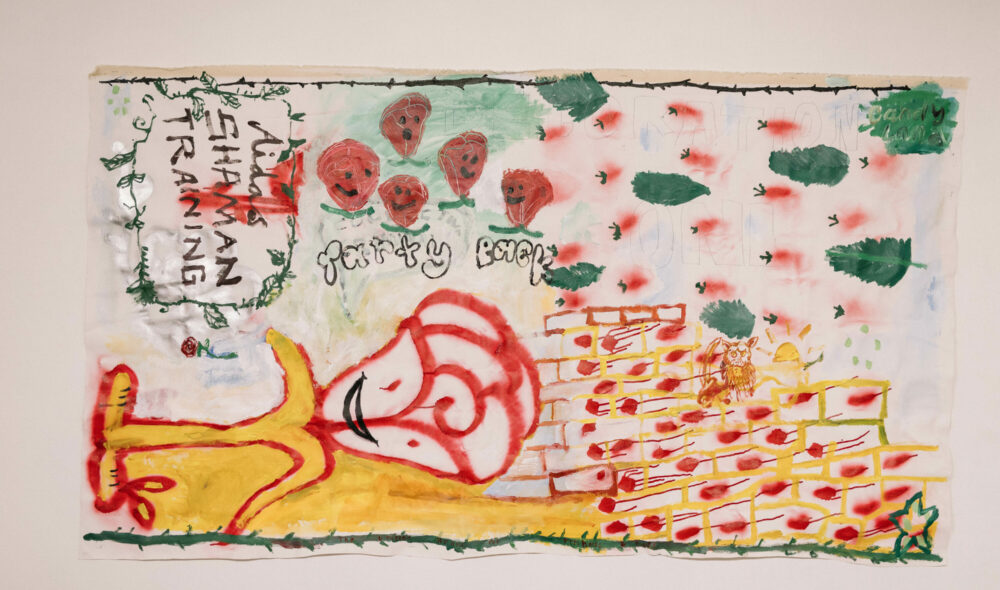
Photograph: Thomas McCammon
- Artwork Collective Criminality
- Artist Aida Azin
- Year 2022
- Medium acrylic and spray on canvas
- Size 1040 x 2250mm
- Price $1200
Installation view
-
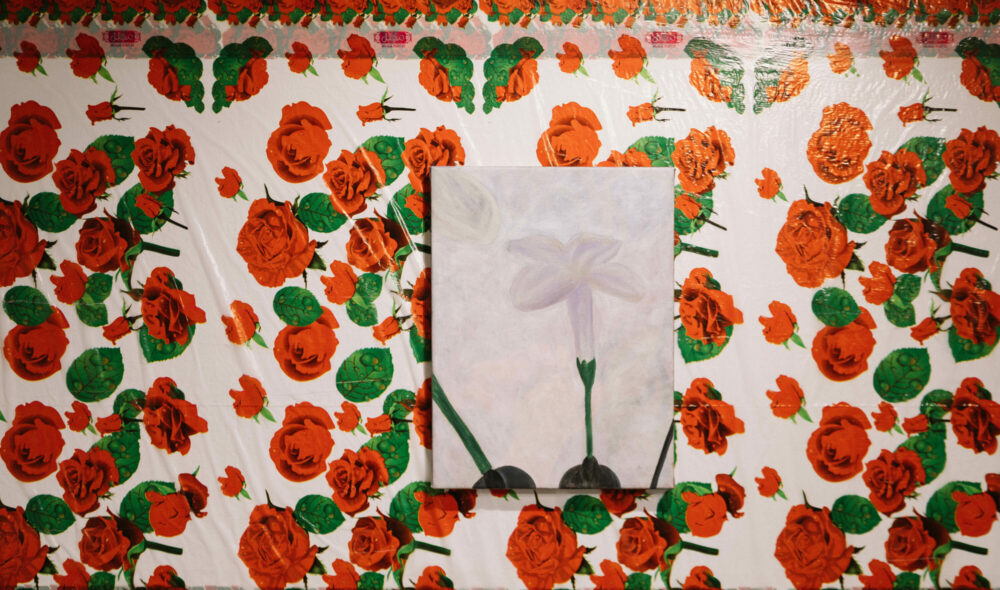
Photograph: Thomas McCammon
- Artwork Palais de Tokyo
- Artist Tara Rowhani-Farid
- Year 2022
- Medium oil on canvas
- Size 409 x 309mm
Installation view
-
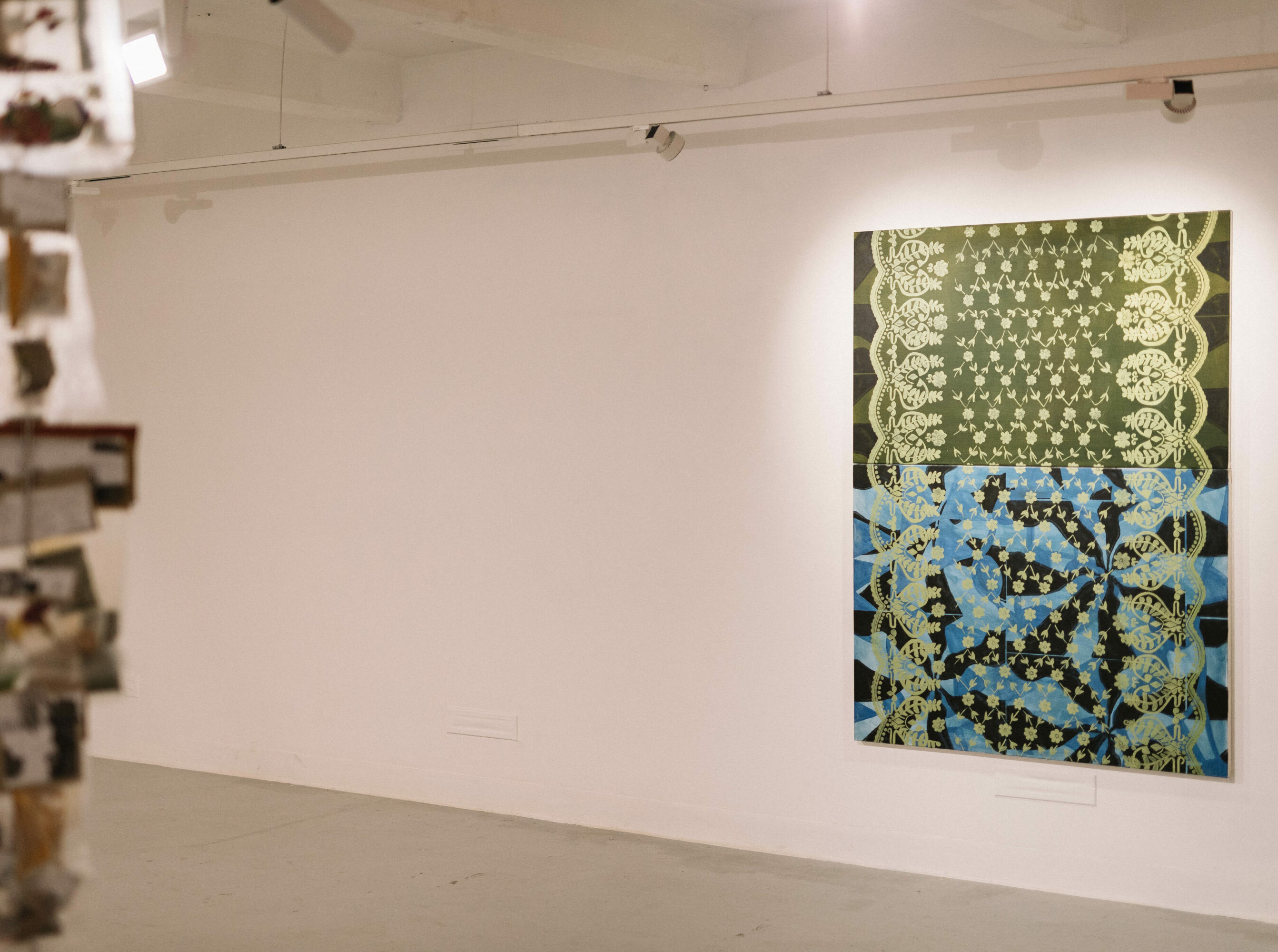
Photograph: Thomas McCammon
- Artwork Take it, it’s mine
- Artist Tara Rowhani-Farid
- Year 2022
- Medium oil on canvas
- Size 1680 x 1223mm
Installation view
-
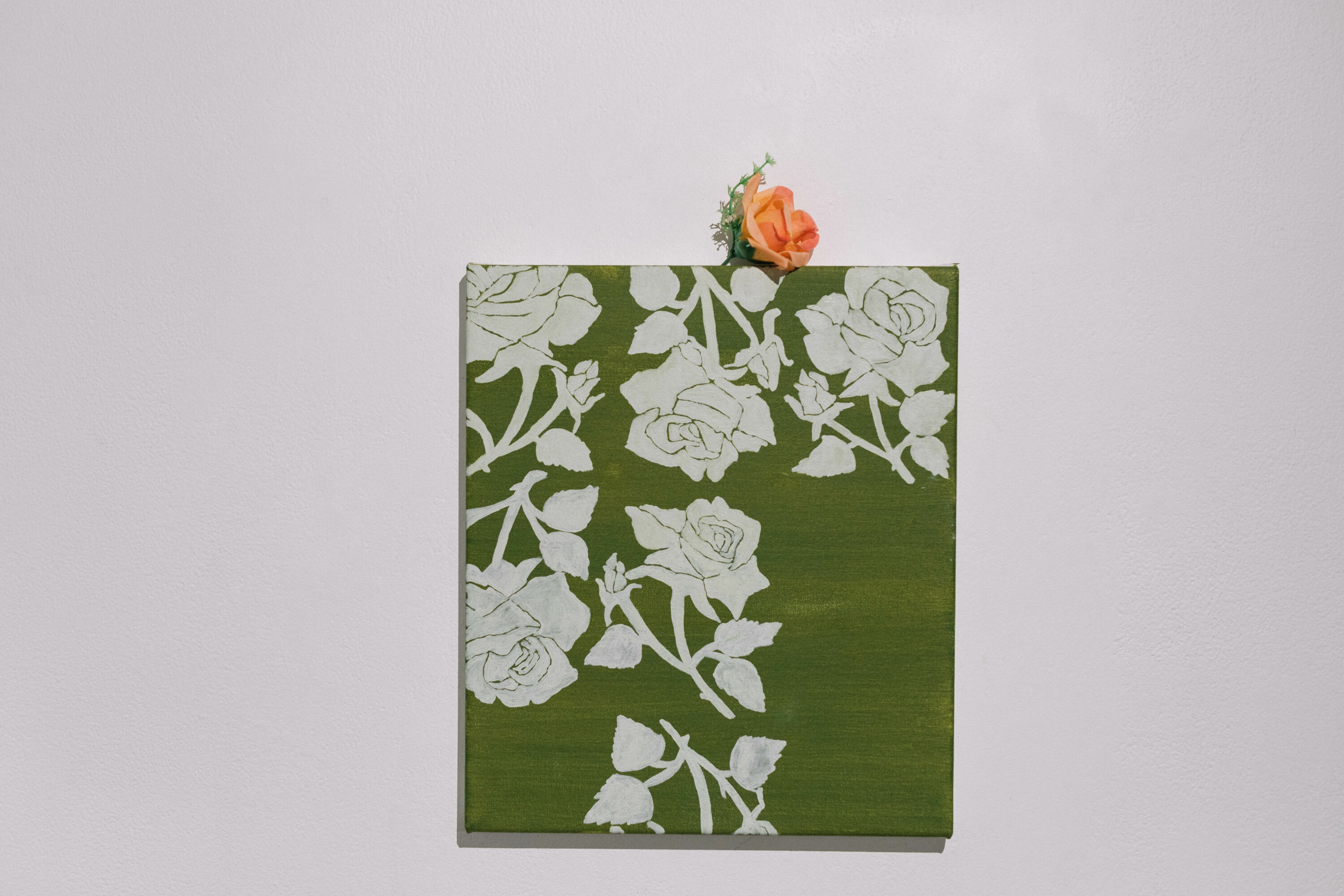
Photograph: Thomas McCammon
- Artwork untitled
- Artist Tara Rowhani-Farid
- Year 2022
- Medium oil on canvas with plastic flower
- Size 375 x 309mm
Installation view
-
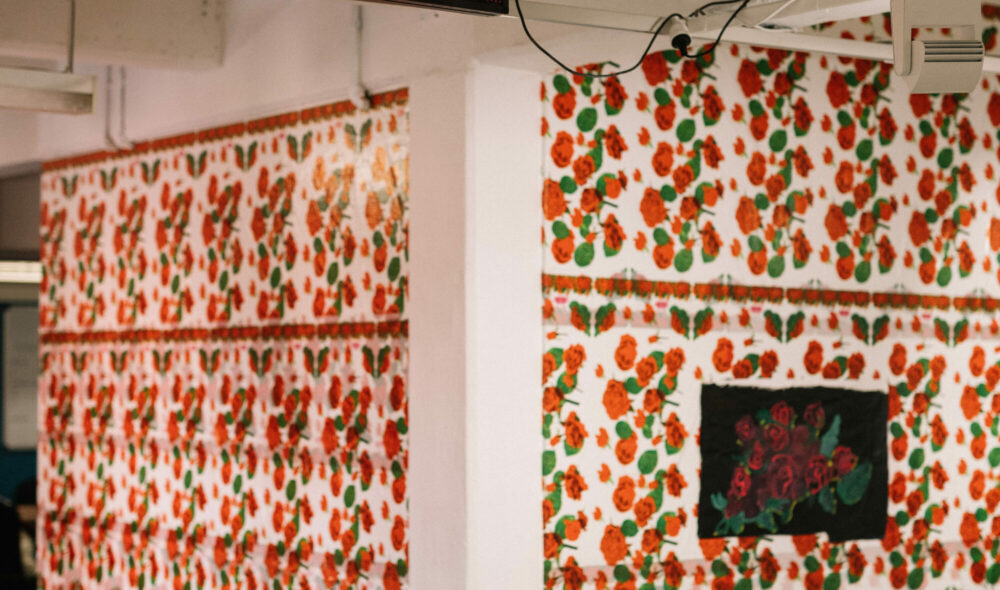
Photograph: Thomas McCammon
- Artwork persian_princess
- Artist Aida Azin and Tara Rowhani-Farid
- Year 2022
- Medium LED sign
- Size 200 x 900mm
Installation view



